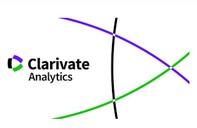The Psychopathic Intimate Partner Batterer: A Non-Psychopathological Profile
Supporting Agencies
- ninguna
Abstract
This theoretical study reviews two of the most cited profiles of intimate partner batterers in the scientific literature, paying special attention to the most notable differences between them, as well as to their common criteria. The study also discusses one of the longest standing controversies in various research studies, including the particular overview with respect to Spain: it being the constant yet erroneous reference to the equivalence of psychopathy and antisocial personality disorder. Similarly, special attention is paid to the implications of considering intimate partner batterers as having either a psychopathological or psychopathic profile, while also stressing the specific role played by psychopathy in the intimate partner batterer and, concerning psychopathic intimate partner batterers, such aspects as their specific motives for perpetrating intimate partner violence and the evaluation instruments of this particular profile. Finally, a series of future directives for research concerning psychopathic intimate partner batterers are also pointed out.Downloads
The works published in this journal are subject to the following terms:
1. The Publications Service of the University of Murcia (the publisher) retains the property rights (copyright) of published works, and encourages and enables the reuse of the same under the license specified in paragraph 2.
© Servicio de Publicaciones, Universidad de Murcia, 2022
2. The works are published in the online edition of the journal under CC BY-SA 4.0 license, a Creative Commons Reconocimiento-CompartirIgual 4.0 (legal text). You are free to:
- Share: copy and redistribute the material in any medium or format for any purpose, even commercially.
- Adapt: remix, transform, and build upon the material for any purpose, even commercially.
The licensor cannot revoke these freedoms as long as you follow the license terms, under the following terms:
- Attribution: You must give appropriate credit , provide a link to the license, and indicate if changes were made . You may do so in any reasonable manner, but not in any way that suggests the licensor endorses you or your use.
- ShareAlike: If you remix, transform, or build upon the material, you must distribute your contributions under the same license as the original.
No additional restrictions: You may not apply legal terms or technological measures that legally restrict others from doing anything the license permits.
This work is licensed under a Creative Commons Attribution-ShareAlike 4.0 International License.
3. Conditions of self-archiving. Is allowed and encouraged the authors to disseminate electronically pre-print versions (version before being evaluated and sent to the journal) and / or post-print (version reviewed and accepted for publication) of their works before publication, as it encourages its earliest circulation and diffusion and thus a possible increase in its citation and scope between the academic community. RoMEO Color: Green.















